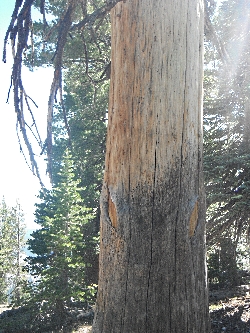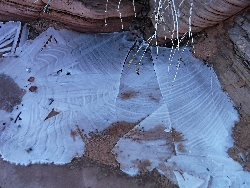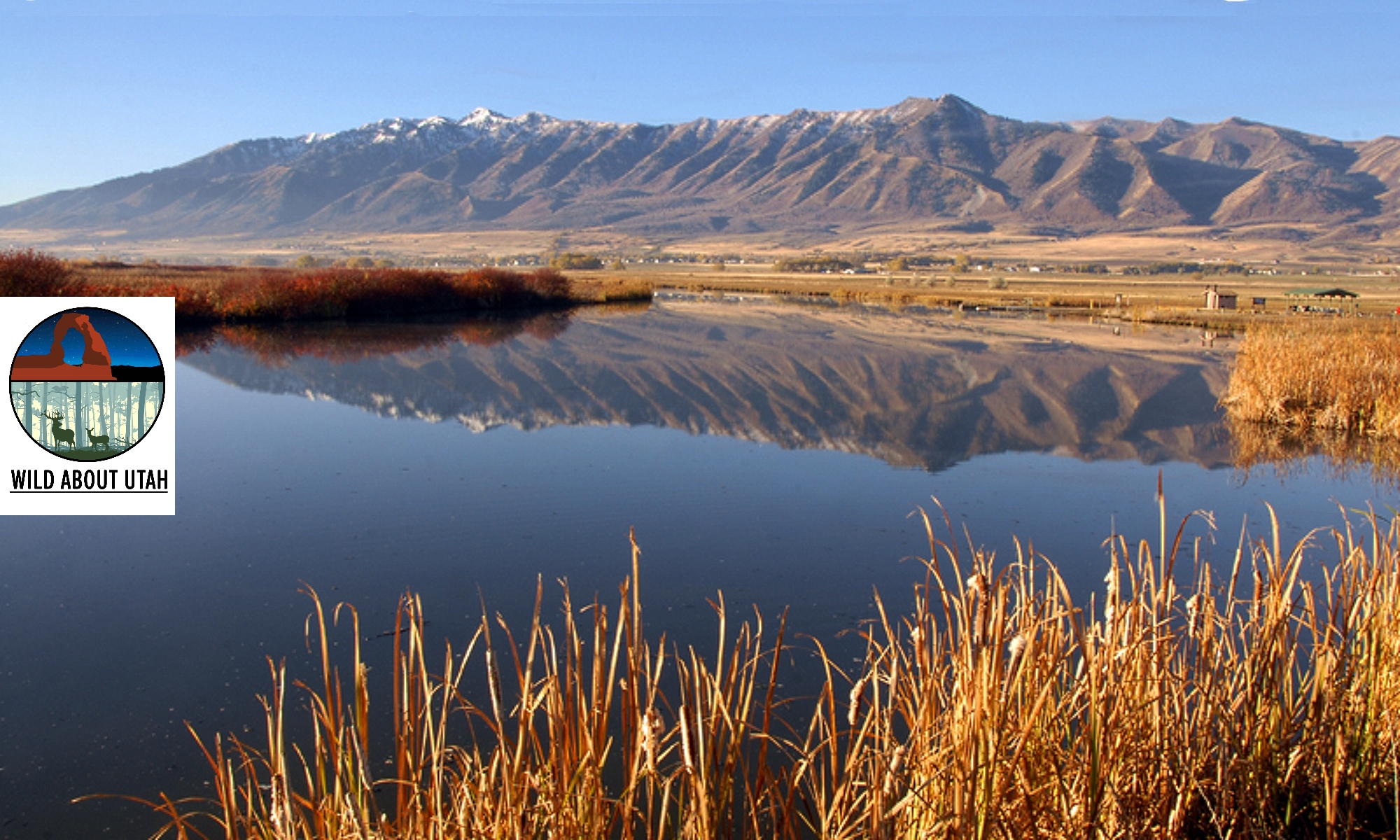
Courtesy & © Josh Boling
Wilderglyphs come in all shapes, patterns, colors, and forms- as varied as the consortium of elemental forces and ingredients that created them. They’re easy to spot as well because the wilderglyph hunter need only look for artworks created by the happenstances of nature. I once found a particularly interesting evergreen snag while backpacking in the Sierras. It reminded me of a demon with its glaring, fire-scarred, knot-hole eyes and menacing dreads of burnt and broken branches. Like ancient Egyptian hieroglyphs, this wilderglyph told a story of its place- a fiery moment in time captured temporarily in the flesh of the once-living.

Courtesy & © Josh Boling
There are more than just stories written into wilderglyphs, though. There is a certain science to them that, if known, can be useful to finding one’s way within the less familiar places we visit.
While descending a slot canyon, one of our party slid his hand along the water-worn wall and then back the other way. “Hey!” came his cry of discovery. He had found that, in one direction (downstream), the wall was smooth and unadorned with blemishes; but, in the other direction (upstream), the sandstone wall was as rough and coarse as sandpaper, providing us with a subtle and very general orientation of the area’s watershed. If lost in the canyons of southern Utah, one could at least know, even in the dark, in which direction he or she might find a larger, main drainage and possibly a way out.
In his celebrated book, Finding Your Way Without Map or Compass, the acclaimed orienteer and aviator Harold Gatty references many such wilderglyphs as navigatory resources. In one chapter, he discusses the useful “signpost ant” and its “compass anthills.” “When their mounds are built in open ground,” Gatty says, “they are oriented most accurately to the southeast, so much so that the native humans of the area often use them to pick up bearings when they are lost in a fog or away from home.” Perhaps more applicable to the Utah traveler are Gatty’s discussions of wind and sand. The orientation of sand dunes and the wind-blown ripples across their faces can divulge direction as readily as a compass if the direction of a prevailing wind is known.
The beauty of wilderglyphs are in their conspicuous subtlety. They are a reminder to us that despite the somewhat chaotic progress of human civilization, the Earth and its faculties persevere readily discernible to those who are able and willing to look.
I’m Josh Boling, and I’m Wild About Utah.
Credits:
Photos: Courtesy & Copyright Josh Boling
Text: Josh Boling, 2017
Sources & Additional Reading
Dasgupta, Shreya, The 15 most amazing landscapes and rock formations, BBC, Feb 5, 2015,
https://www.bbc.com/earth/story/20150205-the-15-most-amazing-landforms
vibills, 11 Natural Geological Formations That Are Absolutely Too Weird To Be Real, Buzzfeed, Jan 1, 2014,
https://www.buzzfeed.com/vibills/11-natural-geological-formations-that-are-absolute-hfde
Wierd Google Earth, Archives for Natural formations, WeirdGoogleEarth.com, https://www.weirdgoogleearth.com/category/natural-formations/
